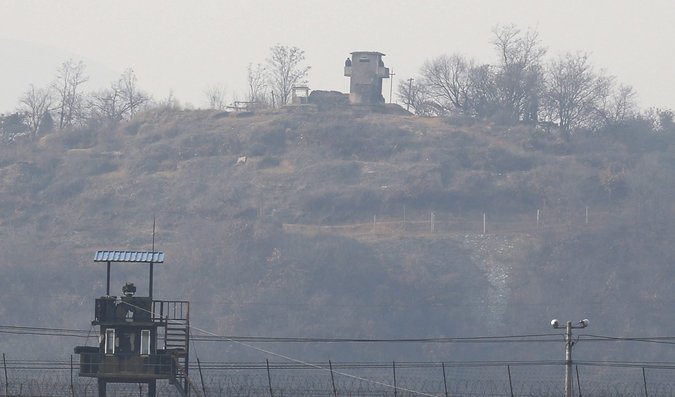
by Choe Sang-Huna • New York Times
South Korea has determined that North Korea is capable of mounting a nuclear warhead on its medium-range Rodong ballistic missile, which could reach all of South Korea and most of Japan, a senior government official said on Tuesday.
The government’s assessment, shared in a background briefing with foreign news media representatives in Seoul, followed a recent claim by North Korea that it had “standardized” nuclear warheads small enough to be carried by ballistic missiles. South Korean officials, like their American counterparts, have said that the North has made progress in miniaturizing nuclear warheads, but have been reluctant to elaborate.
But after four recent nuclear tests by the North, the latest on Jan. 6, some nongovernmental analysts in South Korea have said that they believe the North has learned how to fit its medium-range Rodong missile with nuclear warheads. The senior government official echoed that assessment, but did not provide any evidence of how the government has made its determination.
He did not say if the North had actually built such a warhead or simply had the technology to do so, but said the government did not have any evidence that the North had actually fitted miniaturized warheads onto a missile.
Even if such advances have been made for medium-range missiles, most analysts in the United States and South Korea say the North may still be years away from building a nuclear-tipped intercontinental ballistic missile that could target the continental United States.
The Rodong missile, first deployed in the 1990s, can fly about 800 miles, which would put some United States military bases in South Korea and Japan within its range. It could carry a warhead weighing about 1,500 to 2,200 pounds, South Korea says.
North Korea test-launched two Rodong missiles last month, flouting United Nations resolutions that ban the country from developing or testing ballistic missile technology.
The tests took place days after the North’s leader, Kim Jong-un, ordered more tests of ballistic missiles capable of delivering a nuclear warhead. Mr. Kim also recently visited a factory where he inspected what looked like a model nuclear warhead and long-range missile, according to photographs released in the country’s official news media.
North Korea also said that Mr. Kim had overseen a successful test of “re-entry” technology, which is needed for a warhead on an intercontinental ballistic missile to survive the heat and vibrations while plunging through the atmosphere toward its target.
There has been a continuing debate about how close North Korea has come to acquiring nuclear-tipped missiles. The country has never flight-tested a long-range missile.
After the North’s recent claims, the South Korean Defense Ministry said on March 9 that it did not believe the North had achieved the miniaturization of a nuclear warhead, but it did not clarify whether it meant long-or short-range missiles.
The Pentagon has also voiced skepticism.
But one senior United States military commander, Adm. William E. Gortney, said at a Senate hearing last month that it was a “prudent decision” to assume that the North “has the capability to miniaturize a nuclear weapon and put it on an ICBM.”